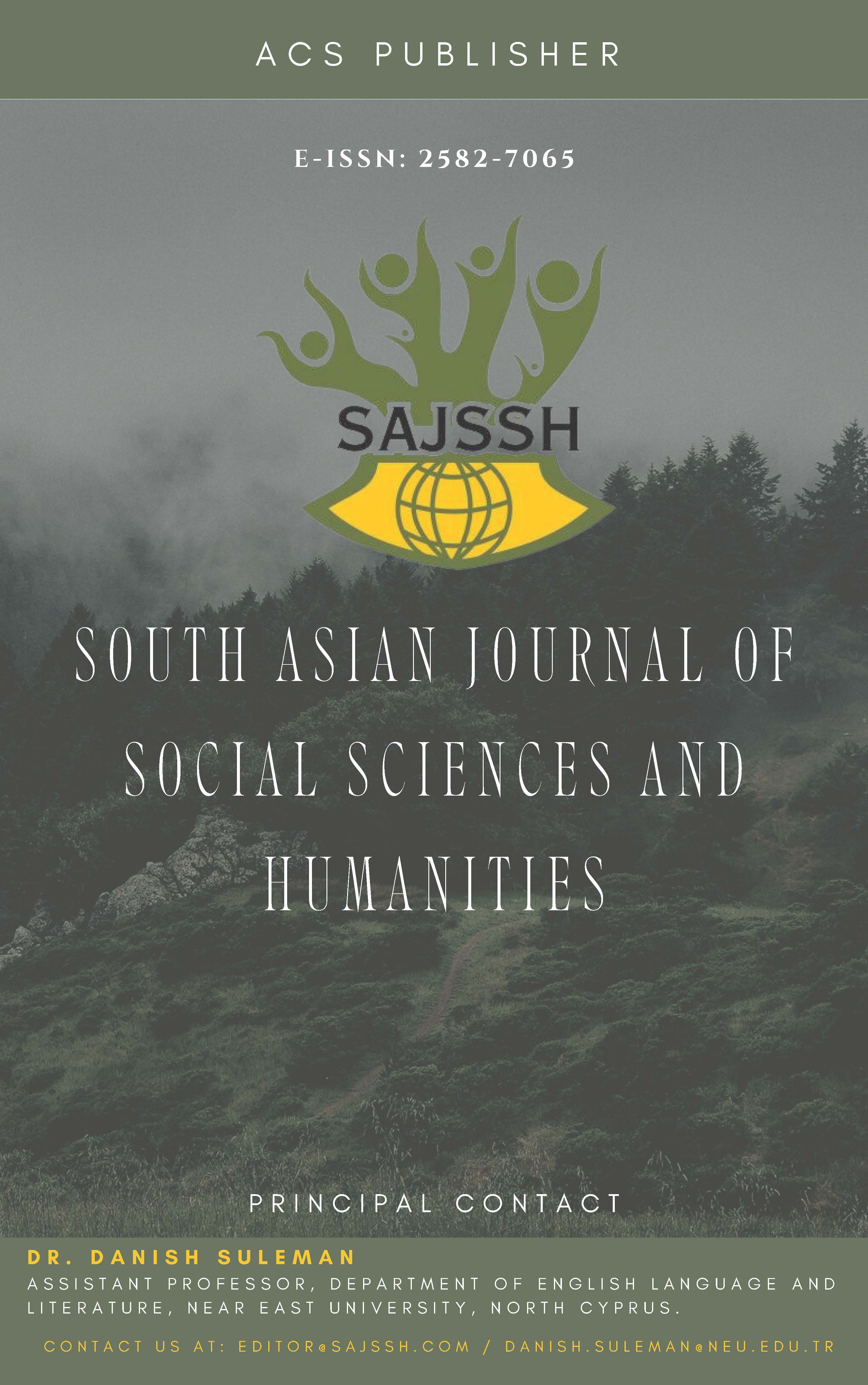The Impact of Creative Thinking Application on Employees' Performance at Paramilitary Organization
DOI:
https://doi.org/10.48165/sajssh.2024.6412Keywords:
Creative Thinking Application, Employee Performance, Paramilitary OrganizationsAbstract
This study investigates the impact of applying creative thinking on employee performance within paramilitary organizations. In particular, civilian police institutions have demonstrated growing interest in integrating creative thinking as a means to enhance operational efficiency. These organizations have adopted structured policies and decision-making frameworks aligned with innovation-driven training strategies to keep pace with rapid scientific and technological advancements. Effective employee performance in such environments necessitates a foundation of knowledge, coupled with soft and creative skills, within a competency-based training system. A quantitative methodology was employed to assess the influence of creative thinking application on employee outcomes in paramilitary settings. The study focused on a sample of 120 officers from the Palestinian Civil Police. Structural Equation Modeling (SEM) was utilized through the Amos software to analyze the relationship between the key variables. Findings indicate a significant positive effect of creative thinking application on employee performance. This suggests that performance enhancement in paramilitary contexts is closely tied to knowledge acquisition and creative capability development. To maintain service quality and sustain a competitive edge, organizations must assess employee competencies through scientifically grounded standards focused on functional efficiency and innovation.
References
Algiani, R., Artayasa, P., Sukarso, & Ramdani, A. (2023). Application of guided inquiry model using self-regulated learning approach to improve student's creative disposition and creative thinking skill in biology subject. Jurnal Penelitian Pendidikan IPA, 9(1), 221–230.
Alzghoul, A., Algraibeh, K., Khawaldeh, K., Khaddam, A., & Al-Kasasbeh, O. (2023). Nexus of strategic thinking, knowledge-oriented leadership, and employee creativity in higher education institutes. International Journal of Professional Business Review, 8(4), e01107.
Anayo, A., Itodo, M., & Onuora, M. (2024). Effect of e-governance training on employee performance at National Orientation Agency, Abuja. Kashere Journal of Politics and International Relations, 2(1), 57–64.
Boyce, A., Nieminen, L., Gillespie, M., Ryan, A. M., & Denison, D. (2015). Which comes first, organizational culture or performance? A longitudinal study of causal priority with automobile dealerships. Journal of Organizational Behavior, 36(3), 339–359.
Cai, W., Khapova, S., Bossink, B., Lysova, E., & Yuan, J. (020). Optimizing employee creativity in the digital era: Uncovering the interactional effects of abilities, motivations, and opportunities. International Journal of Environmental Research and Public Health, 17(3), 1038.
Cooper, G. (2023). Examining science education in ChatGPT: An exploratory study of generative artificial intelligence. Journal of Science Education and Technology, 32(3), 444–452.
Elbyaly, H., & Elfeky, A. I. (2023). The efficiency of instructional gaming programs in stimulating creative thinking. European Chemical Bulletin, 12, 6613–6621.
Huang, B., Sardeshmukh, S., Benson, J., & Zhu, Y. (2023). High performance work systems, employee creativity and organizational performance in the education sector. The International Journal of Human Resource Management, 34(9), 1876–1905.
Hussey, I., Alsalti, T., Bosco, F., Elson, M., & Arslan, R. (2023). An aberrant abundance of Cronbach’s alpha values at .70.
Kirby, A. (2023). Exploratory bibliometrics: Using VOSviewer as a preliminary research tool. Publications, 11(1), 10.
Mose, J. (2023). Influence of performance appraisal on employee performance in the energy sector Kenya. Available at SSRN 4605024, 5(8), 43–55.
Motlokoa, M., Sekantsi, P., & Monyolo, R. (2018). The impact of training on employees’ performance: The case of banking sector in Lesotho. International Journal of Human Resource Studies, 8(2), 16–46.
Ningsih, S., Firdausijah, T., & Alamsyah, K. (2023). Digital-based HR development strategy in improving employee performance at the telecommunications equipment testing center. Historia Vegueta. Anuario de la Facultad de Geografía e, 23(1), 89–103.
Nmadu, T., Idris, A., Aidelokhai, I., & Adamu, I. (2021). The effects of training on employee performance in an organization. Zamfara Journal of Politics and Development, 2(2), 9.
Okonkwo, A. (2023). Relationship between staff motivation and the performance of the studied organizations in Bayelsa State. European Journal of Marketing Management Sciences, 6(5), 61–76.
Oladejo, Y., & Adenuga, A. (2023). Sociological application of behavioural theories to work performance of academic staff in Nigerian universities. Przegląd Krytyczny, 5(1), 47–56.
Pietruszka-Ortyl, A., Ćwiek, M., Ziębicki, B., & Wójcik-Karpacz, A. (2021). Organizational culture as a prerequisite for knowledge transfer among IT professionals: The case of energy companies. Energies, 14(23), 8139.
Rahman, M. (2023). Sample size determination for survey research and non-probability sampling techniques: A review and set of recommendations. Journal of Entrepreneurship, Business and Economics, 11(1), 42–62.
Redifer, J., Bae, C., & DeBusk-Lane, M. (2019). Implicit theories, working memory, and cognitive load: Impacts on creative thinking. SAGE Open, 9(1), 2158244019835919.
Redifer, J., Bae, C., Zhao, Q., & Instruction. (2021). Self-efficacy and performance feedback: Impacts on cognitive load during creative thinking. Learning, 71, 101395.
Robinson, J. (2024). Likert scale. In Encyclopedia of Quality of Life and Well-Being Research (pp. 3917–3918). Springer.
Ugwoke, R. O. (n.d.). An assessment of the impact of staff motivation on organizational performance.
Rosadi, I., Setyaningsih, S., & Suhardi, E. (2024). The influence of visionary leadership, organizational culture, self-efficacy, and work motivation on teacher creativity. Journal of Educational Administration, 41(1), 30–55.
Sternberg, R., Preiss, D., & Karami, S. (2023). An historical causal-chain theory of conceptions of intelligence. Review of General Psychology, 27(3), 320–335.
Weiss, T., & Hartle, F. (2023). Reengineering performance management: Breakthroughs in achieving strategy through people. CRC Press.
Zahlan, A., Ranjan, P., & Hayes, D. (2023). Artificial intelligence innovation in healthcare: Literature review, exploratory analysis, and future research. Technology in Society, 102321.
Zhang, W., Zeng, X., Liang, H., Xue, Y., & Cao, X. (2023). Understanding how organizational culture affects innovation performance: A management context perspective. Sustainability, 15(8), 6644.
Downloads
Published
Issue
Section
License
Copyright (c) 2025 South Asian Journal of Social Sciences and Humanities

This work is licensed under a Creative Commons Attribution 4.0 International License.





